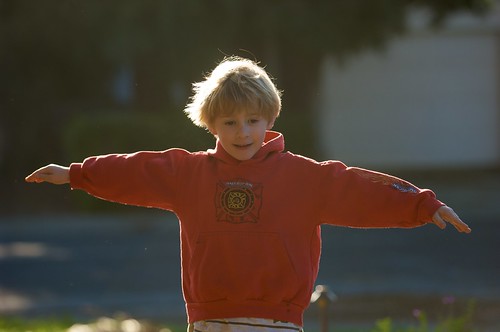Balance development issues in children doing Judo.
Balance is an essential attribute in the sport of Judo. One of the fundamental principles in Judo is the mainatining of your balance whilst breaking your opponents balance. A child in Judo will develop a good sense of balance and the ability to maintain their balance despite being pushed and pulled by others. It is worth being aware however, of the changes in how children maintain balance as they grow up. (This post is a complimentary post to a more scientific coaching article soon to be published on Judocoach.com).
 As a parent, you will have already seen the development of blance in a child. You see it as they progress from not being able to do anything more than lie on the backs/fronts, to being able to sit, stand and walk. There is a definite development path that is followed, in this path your child will go from basically moving their head and body as a single unit, to moving head and body independantly to maintain balance.
As a parent, you will have already seen the development of blance in a child. You see it as they progress from not being able to do anything more than lie on the backs/fronts, to being able to sit, stand and walk. There is a definite development path that is followed, in this path your child will go from basically moving their head and body as a single unit, to moving head and body independantly to maintain balance.
This transition typically happens between 6-7 years of age and as with all changes in a young childs life, there is a awkwardness associated this stage in their development. This can raise (what are generallyminor) issues which can affect your child.
If your child has been in Judo from before 6-7 years of age, then they will go through a phase where their balance maintenance changes. This may result in changes in their ability to excute Judo techniques. They may find different movements more challenging than previously, they may not.
If they are starting at 6-7 years (which is quite common), then there may be some difference in balance development between children in the class. Good coaches will be aware of the changes in thierr students and will be able to deal with it appropriately.
If your child is starting Judo later than 6-7 years, then they have most likely made the transition, but be aware that their balance is still developing.
What are the changes?
The main is from head and body moving as one, to head moving and body moving independantly. This might be visible when they are off balance, say when balancing on one leg. In this position a younger child’s head is going to be inline with their body, whilst an older child may keep their head more upwards.
As children age further, the nerve activity becomes focussed lower in the legs. Moving from hips and kness to ankles.
Parents probably are unconciously aware of these sorts of developments in your children, bringing them into concious awareness and perhaps mentioning it to a coach might help ensure that your child progresses more smoothly in a Judo class. In teh coaching context (as will be covered in the Judocoach.com post), the coaches will need to ensure they are not trying to get young children pre-transition from trying to move head independantly from their body, which is common in Judo, as we often encourage children to look in one direction whilst moving in another. With your young child, coaches will be doing movements where head and body move as a single unit.
![Reblog this post [with Zemanta]](https://img.zemanta.com/reblog_e.png?x-id=1bc5edf3-8f69-4fbf-ae6f-e88bf0ffc418)